Decagonal bipyramid
In geometry, a decagonal bipyramid is one of the infinite set of bipyramids, dual to the infinite prisms. If a decagonal bipyramid is to be face-transitive, all faces must be isosceles triangles. It is an icosahedron, but not the regular one.
| Decagonal bipyramid | |
|---|---|
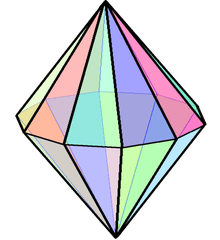 | |
| Type | bipyramid |
| Faces | 20 triangles |
| Edges | 30 |
| Vertices | 12 |
| Schläfli symbol | { } + {10} |
| Coxeter diagram | |
| Symmetry group | D10h, [10,2], (*2.2.10), order 40 |
| Rotation group | D10, [10,2]+, (2.2.10), order 20 |
| Dual polyhedron | Decagonal prism |
| Face configuration | V4.4.10 |
| Properties | convex, face-transitive |
Images
It can be drawn as a tiling on a sphere, and represents the fundamental domains of [5,2], *5.2.2 symmetry.
gollark: I know what those words mean, but not *together*.
gollark: Oh no.
gollark: But there are something like 10 good ones.
gollark: Those don't actually need many crypto libraries. Why do people have 3000 of them?
gollark: Worryingly, the biggest category it defines is crypto libraries.
See also
| Polyhedron | 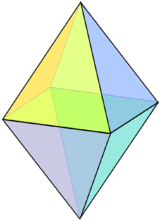 |
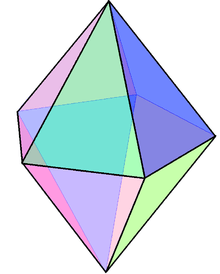 |
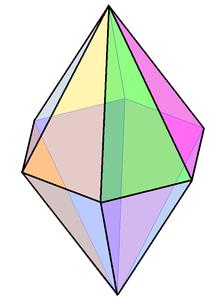 |
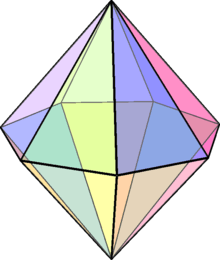 |
 |
 | |||
|---|---|---|---|---|---|---|---|---|---|
| Coxeter | |||||||||
| Tiling |  |
 |
 |
 |
 |
 |
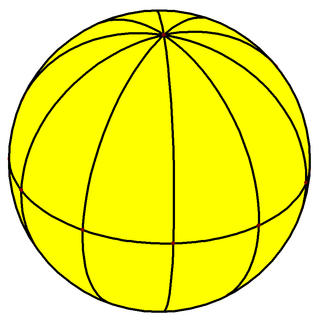 | ||
| Config. | V2.4.4 | V3.4.4 | V4.4.4 | V5.4.4 | V6.4.4 | V7.4.4 | V8.4.4 | V9.4.4 | V10.4.4 |
External links
- Weisstein, Eric W. "Dipyramid". MathWorld.
- Virtual Reality Polyhedra The Encyclopedia of Polyhedra
- VRML models <10>
- Conway Notation for Polyhedra Try: dP10
This article is issued from Wikipedia. The text is licensed under Creative Commons - Attribution - Sharealike. Additional terms may apply for the media files.